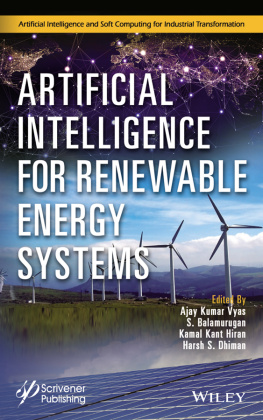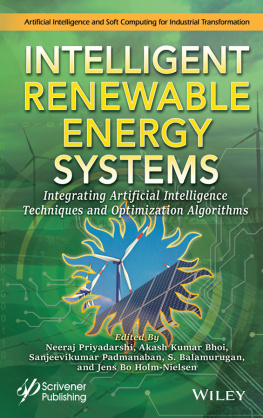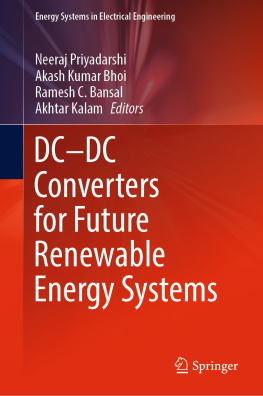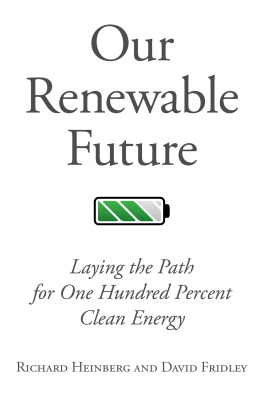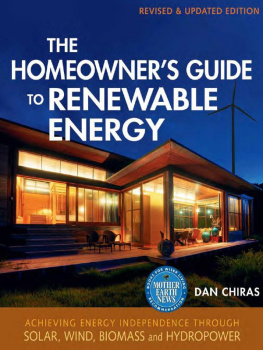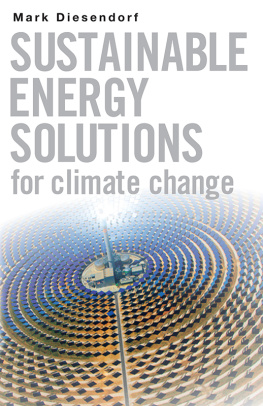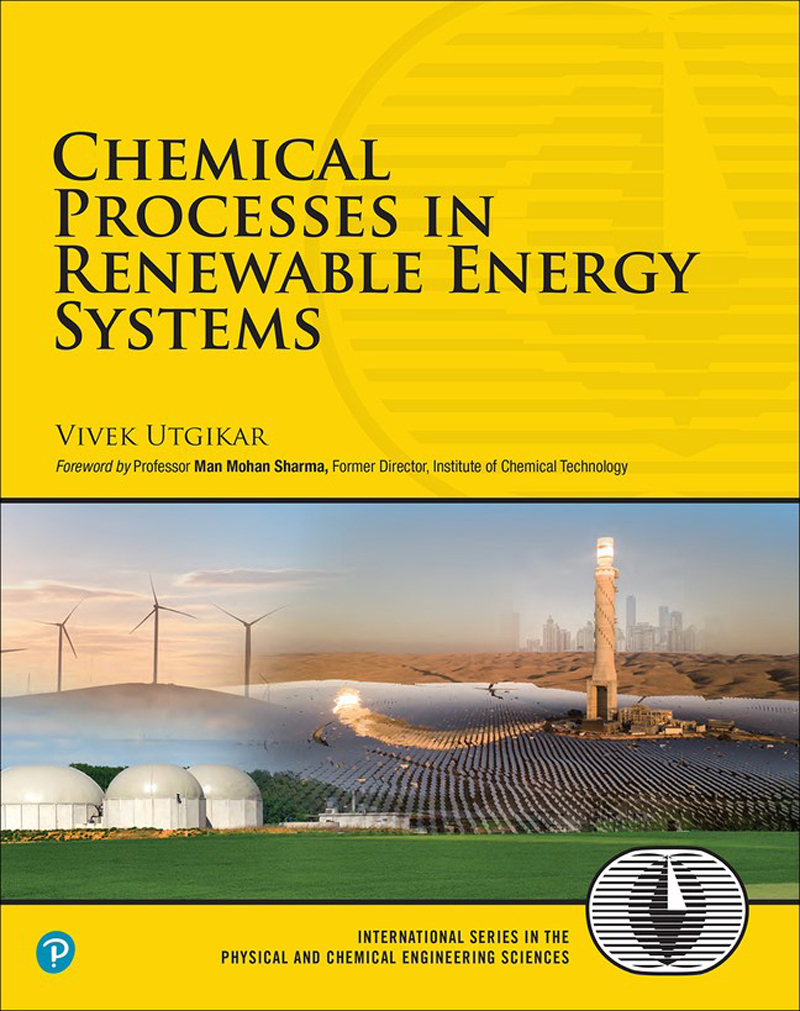Foreword
The Industrial Revolution marks a key milestone in the history of humankind. Humans worked out how to convert thermal energy into mechanical energy to drive the machines that would replace the muscle power of humans and animals. Societies embarked upon an unprecedented expansion in every aspect of their life, and this expansion shows no signs of abatement anytime soon. The key unlocking these developments was and continues to be the human inventiveness in exploiting fossil resources created over thousands of millennia.
These activities have coincided with a significant change in earths environment. The scientific community is in near-consensus about climate change and its linkage to fossil fuel usage. Under this scenario, a transition away from the fossil fuels is sine qua non for countering climate change, considered by many to be an existential threat to humankind. The full potential of nuclear energy has yet to be realized and the high cost and time of installation, particularly due to safety measures, has proved to be a great barrier. This has left renewable energy as the sole candidate to replace fossil energy to quench the energy thirst of the world.
Renewable energy has a dual nature: it is conceptually very easy to understand. Principles underlying wind power, solar thermal and photovoltaic, or geothermal energy are easily grasped by any individual. However, technological challenges in their implementation are highly complex due to the dilute nature of the energy sources. The high-entropy sources require considerable manipulations to provide energy and power on larger scales that are needed by modern industrial societies.
It is in this context that the author has presented the energy transformations of renewable energy sources. Converting the primary resources into energy carriers that operate the machine of the industry is, simply put, a nontrivial exercise that is continually evolving and requires imagination and creativity. As an example, development in composite materials has resulted in substantial increase in the size of blades and consequently, the power generated by a wind turbine. Similarly, exciting advances in solar photovoltaics include the development of the next generation of solar cells including dye-sensitized cells. Concomitant with energy generation, opportunities exist for obtaining value-added products through valorization of lignin in biomass energy systems and potable water from coupled desalination units increasing the competitiveness of renewable energy systems. Devising solutions for the success of this enterprise requires educating a new generation of engineers who are well-versed in the science and technology of renewable energy processes.
This book has presented the fundamental principles governing these transformations and their applications that will enable a reader to acquire the skill set necessary to function in the renewable energy arena. The discussion of hybrid energy systems and the techno-economic aspects brings an additional value to the book. The book will take the readers on a fascinating journey, rewarding them with a broader perspective as well as deeper insights into key facets and concepts of renewable energy.
Professor Man Mohan Sharma
Former Director, Institute of Chemical Technology
Mumbai, India
April 2021
Preface
The most famous and dramatic articulation of the principle of population growth outstripping resources was made toward the end of the 18th century by the Reverend Thomas Malthus, a British political economist. Rev. Malthus was, of course, talking about food resources, postulating that populations have a geometric growth pattern and are bound to run out of food resources that grow only arithmetically, ultimately leading to a disaster involving mass starvation and deaths. This hypothesis was a major influence for many governments of the time in formulating their policies that were not necessarily beneficial to their populations.
In the intervening period since Rev. Malthus propounded his theory, the human population has increased by leaps and bounds, and despite occasional, localized episodes of famine and starvation, the dire prediction of a widespread Malthusian catastrophe has never materialized. Much of the success in averting this catastrophe is due to human ingenuity in harnessing new forms of energy, which is truly the master resource that enables creation and exploitation of other resources. Development of theseprimarily fossil energy resourcesand the industrial revolution fueled by these resources have enabled populations world over to thrive, grow, and enjoy an unparalleled standard of living compared to agrarian societies of the past.
Accelerated exploitation of fossil resources have reignited the question of resource limitations, and the 20th century has seen an emergence of Neo-Malthusianism that seeks to apply Malthusian concepts to all resources, including energy resources. Notwithstanding the successes in the prediction of exhaustion of localized fossil resources, global exhaustion of these resources remains questionable. However, climate change concerns portend an inevitable phase-out of fossil fuels and their displacement by renewable primary energy sources that by their very nature are untouched by any Malthusian constraints.
A sustainable energy future requires a substantial growth in renewable energy systems to replace the current energy mix. These systems provide the solution to the problem of growing carbon emissions and consequent climate change that threatens the human civilization in its present form. Development of these renewable energy systems requires engineers and other technical professionals to be knowledgeable in harnessing the primary energy resources and converting those to energy carriers that can be integrated with the current energy infrastructure.
This book has grown out of the need to have a text that would provide the necessary theoretical foundation and exposure to practical systems to educate these technical professionals. The motivation was to create a book that will serve engineering students and practitioners engaged in the energy field. Despite the considerable literature regarding the technologies employed in the renewable energy field, a comprehensive text that presents the fundamental engineering principles and their applications in renewable energy technologies is currently not available. This text seeks to fill this unique niche and will be invaluable in preparing renewable energy professionals for responding to current and future challenges in the sustainable growth of renewable energy technology.
, Transformations and Chemical Processes in Mechanical, Geothermal, and Ocean Energy Systems.
Energy systems of the future will almost certainly be hybrid, featuring a combination of primary energy sources and a provision for energy storage. These hybrid energy systems are discussed in , Techno-Economic Analysis of Renewable Energy Systems, to provide the reader with an understanding of the factors that inform the energy policy.
The field of renewable energy can be visualized as a vast canvass with continually evolving scenery due to the rapid technological developments taking place in its every aspect. A particular challenge for this book, as it will be for any book on renewable energy, was to capture the latest scenery while maintaining the relevance for future development. The approach in this book in dealing with this challenge has involved focusing on the fundamental scientific and technological principles and explaining/analyzing the transformations in the context of these underlying principles. Every attempt has been made to incorporate the latest developments by consulting the state-of-the-art literature. Sufficient references are provided for the reader to explore any particular topic in greater detail. It is expected that this approach will serve the readers well in their efforts to stay up-to-date with the most recent developments in the renewable energy field.




